The Time Machine (2002 film)
7 /10 2 Votes
Duration Language English | 6/10 IMDb Genre Sci-Fi, Adventure, Action Country United States | |||||||||||||||||||||||||||||||||
 | ||||||||||||||||||||||||||||||||||
Release date March 8, 2002 (2002-03-08) Cast (Alexander Hartdegen), (Mara), (Mrs. Watchett), (Flower Seller), (Motorist), (Emma) Similar movies Mad Max: Fury Road , Terminator Genisys , Interstellar , Big Hero 6 , Appleseed , Blade Runner Tagline The greatest adventure THROUGH all time! | ||||||||||||||||||||||||||||||||||
The time machine 1 8 movie clip the first attempt 2002 hd
The Time Machine is a 2002 American science fiction film loosely adapted from the 1895 novel of the same name by H. G. Wells and the screenplay of the 1960 film of the same name by David Duncan. Arnold Leibovit served as executive producer and Simon Wells served as director, the great-grandson of the original author. The film stars Guy Pearce, Jeremy Irons, Orlando Jones, Samantha Mumba, Mark Addy, Sienna Guillory and Phyllida Law, and includes a cameo by Alan Young, who also appeared in the 1960 film adaptation. The film is set in New York City instead of London, and contains new story elements not present in the original novel, including a romantic backstory, a new scenario about how civilization was destroyed, and several new characters, such as an artificially intelligent hologram played by Orlando Jones, and a Morlock leader played by Jeremy Irons. It was nominated for the Academy Award for Best Makeup (John M. Elliot, Jr. and Barbara Lorenz) at the 75th Academy Awards, but lost to Frida.
Contents
- The time machine 1 8 movie clip the first attempt 2002 hd
- The time machine 2 8 movie clip going forward 2002 hd
- Plot
- Cast
- Production
- Special effects
- Soundtrack
- Critical reception
- The time machine 4 8 movie clip the morlocks 2002 hd
- References

The time machine 2 8 movie clip going forward 2002 hd
Plot
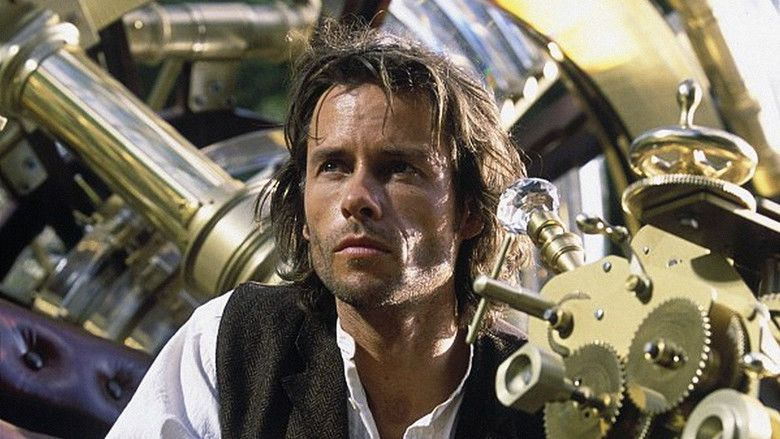
In the year 1899, Dr. Alexander Hartdegen (Guy Pearce) is a young inventor teaching at Columbia University in New York City. Unlike his conservative friend David Philby (Mark Addy), Alexander would rather do pure research than work in the world of business. After a mugger kills his fiancée, Emma (Sienna Guillory), he devotes himself to building a time machine that will allow him to travel back in time and save her. When he completes the machine four years later, he travels back to 1899 and prevents her murder, only to see her killed by a horseless carriage.
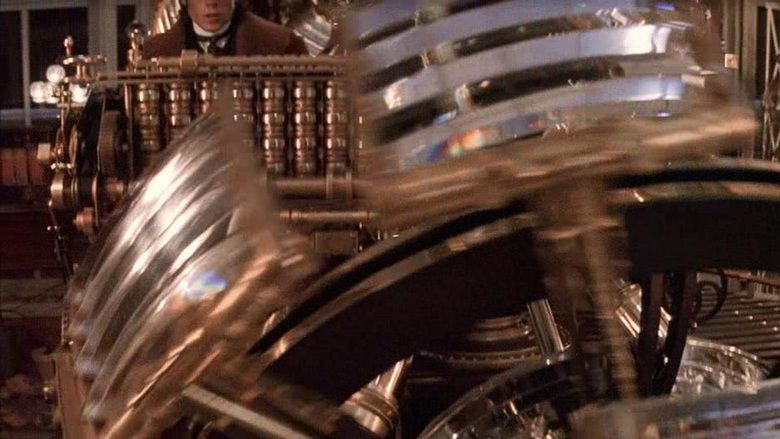
Alexander soon realizes that any attempt to save Emma will invariably result in her death through other circumstances. Distraught, Alexander travels forward in time to 2030 to discover if, by then, science has been able to solve his question of how to change the past, thus determining whether Emma's life can be saved. At the New York Public Library, a holographic librarian called Vox 114 (Orlando Jones) insists that time travel is impossible, so Alexander continues travels to 2037, when the accidental destruction of the Moon by colonists has begun rendering the Earth virtually uninhabitable. While restarting the time machine to avoid debris, Alexander is knocked unconscious and accidentally travels 800 millennia into the future, at which point he regains consciousness and stops the machine in the year 802,701.

By this time, the human race has reverted to a primitive lifestyle, and the Earth has healed. Some survivors, called "Eloi", live on the sides of cliffs of what was once Manhattan. Alexander is nursed back to health by a woman named Mara, one of the few Eloi who speak English. One night, Alexander and Mara's young brother, Kalen, dream of a frightening, jagged-toothed face. The next day, the Eloi are attacked and Mara is dragged underground by ape-like monsters. The creatures are called "Morlocks" and they hunt the Eloi for food. In order to rescue her, Kalen leads Alexander to Vox 114, which is still functioning after 800,000 years.
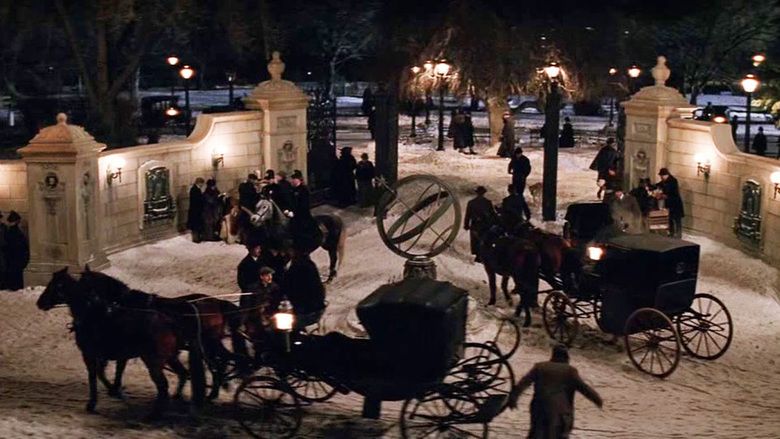
After learning from Vox how to find the Morlocks, Alexander enters their underground lair through an opening that resembles the face in his nightmare. He is almost immediately captured and thrown into an area where Mara sits in a cage. There he meets an intelligent, humanoid Morlock, who explains that Morlocks are the evolutionary descendants of the humans who went underground after the Moon broke apart, while the Eloi are evolved from those who remained on the surface. The humanoid Morlocks are a caste of telepaths who rule the other Morlocks.
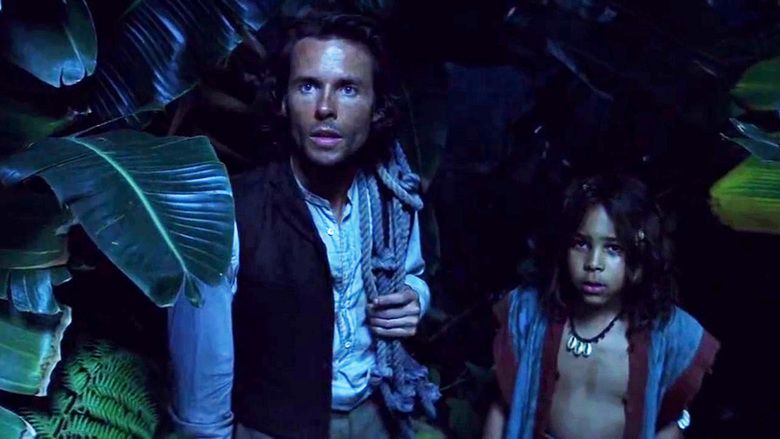
The Morlock explains that Alexander cannot alter Emma's fate because her death is what drove him to build the time machine in the first place: saving her would create a temporal paradox. He then reveals that the Morlocks have brought the time machine underground, and tells Alexander to get into it and return home. Alexander gets into the machine but also pulls the Morlock in with him, carrying them into the future as they fight. The Morlock dies by rapidly aging when Alexander pushes him outside of the machine's temporal bubble. Alexander then stops over six hundred million years in the future in the year 635,427,810, revealing a harsh, rust-colored sky over a wasteland of Morlock caves.
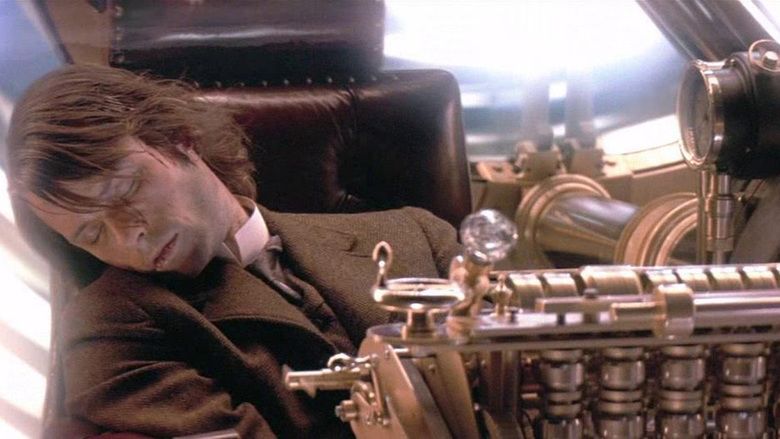
Finally accepting that he cannot save Emma, Alexander travels back to rescue Mara. After freeing her, he starts the time machine and jams its gears, creating a violent distortion in time. Though pursued by the Morlocks, Alexander and Mara escape to the surface as the time distortion explodes, killing the Morlocks and destroying their caves along with the time machine. Alexander begins a new life with Mara and the Eloi in 802,701.

While Alexander shows Mara and Kalen a clearing that was the location of his laboratory in 1903, Philby and housekeeper Mrs. Watchit, are in the laboratory discussing his absence. Philby tells Mrs. Watchit he is glad that Alexander has gone to a place where he can find peace, then tells her that he would like to hire her as a housekeeper, which she accepts until Alexander returns. Mrs. Watchit bids Alexander farewell and Philby leaves, looking toward the laboratory affectionately, then throws his bowler hat away in tribute to Alexander's distaste for conformity.
Cast
Production
The film was a co-production of DreamWorks and Warner Bros. in association with Arnold Leibovit Entertainment who obtained the rights to the George Pal original Time Machine 1960 and collectively negotiated the deal that made it possible for both Warner Brothers and DreamWorks to make the film.
Special effects
The Morlocks were depicted using actors in costumes wearing animatronic masks. For scenes in which they run on all fours faster than humanly possible, Industrial Light & Magic created CGI versions of the creatures.
Many of the time traveling scenes were entirely computer generated, including a 33-second shot in the workshop where the time machine is located. The camera pulls out, traveling through New York City and then into space, past the ISS, and ends with a space plane landing at the moon to reveal earth's future lunar colonies. Plants and buildings are shown springing up and then being replaced by new growth in a constant cycle. In later shots, the effects team used an erosion algorithm to digitally simulate the Earth's landscape changing through the centuries.
For some of the lighting effects used for the digital time bubble around the time machine, ILM developed an extended-range color format, which they named rgbe (red, green, blue and an exponent channel) (See Paul E. Debevec and Jitendra Malik, "Recovering High Dynamic Range Radiance Maps from Photographs, Siggraph Proceedings, 1997).
The warning sirens used during the moon destruction sequence were later used in the film The Curious Case of Benjamin Button for Hurricane Katrina.
Soundtrack
A full score was written by Klaus Badelt, with the recognizable theme being the track "I Don't Belong Here", which was later used in the 2008 Discovery Channel Mini series When We Left Earth. In 2002 The Time Machine (soundtrack) won the World Soundtrack Award for Discovery of the Year.
Critical reception
William Arnold of the Seattle Post-Intelligencer, who was somewhat positive about the film, wrote that it lost some of the simplicity and charm of the 1960 George Pal film by adding characters such as Jeremy Irons' "über-morlock". He praised actor Guy Pearce's "more eccentric" time traveler and his transition from an awkward intellectual to a man of action. Victoria Alexander of Filmsinreview.com wrote that "The Time Machine is a loopy love story with good special effects but a storyline that's logically incomprehensible," noting some "plot holes" having to deal with Hartdegen and his machine's cause-and-effect relationship with the outcome of the future. Jay Carr of the Boston Globe wrote: "The truth is that Wells wasn't that penetrating a writer when it came to probing character or the human heart. His speculations and gimmicks were what propelled his books. The film, given the chance to deepen its source, instead falls back on its gadgets."
Some critics praised the special effects, declaring the film visually impressive and colorful, while others thought the effects were poor. Roger Ebert of the Chicago Sun-Times scorned the film, and found the Morlock animation cartoonish and unrealistic, because of their manner of leaping and running. Ebert notes the contrast in terms of the social/racial representation of the attractive Eloi between the two films... between the "dusky sun people" of this version and the Nordic race in the George Pal film. Aside from its vision of the future, the film's recreation of New York at the turn of the century won it some praise. Bruce Westbrook of the Houston Chronicle writes "The far future may be awesome to consider, but from period detail to matters of the heart, this film is most transporting when it stays put in the past."
The film received a 29% positive rating on Rotten Tomatoes based on 148 critic reviews.
The time machine 4 8 movie clip the morlocks 2002 hd
References
The Time Machine (2002 film) WikipediaThe Time Machine (2002 film) IMDb The Time Machine (2002 film) themoviedb.org
